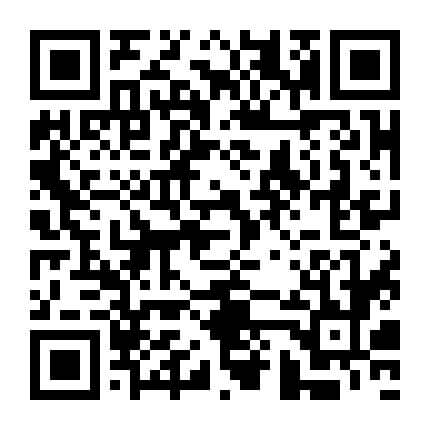考研201英语(一)在线题库每日一练(一百九十二)
摘要:以下是希赛网给大家分享考研201英语(一)在线题库每日一练,希望通过刷题可以帮助大家巩固重要知识点,对知识点查漏补缺,祝愿大家能顺利通过考试!
本文提供考研201英语(一)在线题库每日一练,以下为具体内容
1、In 1924 America's National Research Council sent two engineers to supervise a series of industrial experiments at a large telephone-parts factory called the Hawthorne Plant near Chicago. It hoped they would learn how stop-floor lighting (1)workers' productivity. Instead, the studies ended (2) giving their name to the "Hawthorne effect", the extremely influential idea that the very (3) to being experimented upon changed subjects' behavior. The idea arose because of the behavior of the women in the (4) Hawthorne plant. According to (5) of the experiments, their hourly output rose when lighting was increased, but also when it was dimmed. It did not (6) what was done in the experiment; (7)something was changed, productivity rose. A(n) (8) that they were being experimented upon seemed to be (9) to alter workers' behavior (10) itself. After several decades, the same data were (11) to econometric the analysis. Hawthorne experiments has another surprise in store (12) the descriptions on record, no systematic (13) was found that levels of productivity were related to changes in lighting. It turns out that peculiar way of conducting the experiments may have led to (14) interpretation of what happened. (15), lighting was always changed on a Sunday. When work started again on Monday, output (16) rose compared with the previous Saturday and (17) to rise for the next couple of days. (18), a comparison with data for weeks when there was no experimentation showed that output always went up on Monday, workers (19) to be diligent for the first few days of the week in any case, before (20) a plateau and then slackening off. This suggests that the alleged "Hawthorne effect" is hard to pin down.
问题1
A、affected
B、achieved
C、extracted
D、restored
问题2
A、at
B、up
C、with
D、off
问题3
A、truth
B、sight
C、act
D、proof
问题4
A、controversial
B、perplexing
C、mischievous
D、ambiguous
问题5
A、requirements
B、explanations
C、accounts
D、assessments
问题6
A、conclude
B、matter
C、indicate
D、work
问题7
A、as far as
B、for fear that
C、in case that
D、so long as
问题8
A、awareness
B、expectation
C、sentiment
D、illusion
问题9
A、suitable
B、excessive
C、enough
D、abundant
问题10
A、about
B、for
C、on
D、by
问题11
A、compared
B、shown
C、subjected
D、conveyed
问题12
A、contrary to
B、consistent with
C、parallel with
D、peculiar to
问题13
A、evidence
B、guidance
C、implication
D、source
问题14
A、disputable
B、enlightening
C、reliable
D、misleading
问题15
A、In contrast
B、For example
C、In consequence
D、As usual
问题16
A、duly
B、accidentally
C、unpredictably
D、suddenly
问题17
A、failed
B、ceased
C、started
D、continued
问题18
A、Therefore
B、Furthermore
C、However
D、Meanwhile
问题19
A、attempted
B、tended
C、chose
D、intended
问题20
A、breaking
B、climbing
C、surpassing
D、hitting
2、Of all the changes that have taken place in English-language newspapers during the past quarter-century, perhaps the most far-reaching has been the inexorable decline in the scope and seriousness of their arts coverage. It is difficult to the point of impossibility for the average reader under the age of forty to imagine a time when high-quality arts criticism could be found in most big-city newspapers. Yet a considerable number of the most significant collections of criticism published in the 20th century consisted in large part of newspaper reviews. To read such books today is to marvel at the fact that their learned contents were once deemed suitable for publication in general-circulation dailies.We are even farther removed from the unfocused newspaper reviews published in England between the turn of the 20th century and the eve of World War II, at a time when newsprint was dirt-cheap and stylish arts criticism was considered an ornament to the publications in which it appeared. In those far-off days, it was taken for granted that the critics of major papers would write in detail and at length about the events they covered. Theirs was a serious business, and even those reviewers who wore their learning lightly, like George Bernard Shaw and Ernest Newman, could be trusted to know what they were about. These men believed in journalism as a calling, and were proud to be published in the daily press. “So few authors have brains enough or literary gift enough to keep their own end up in journalism,” Newman wrote, “that I am tempted to define ‘journalism’ as ‘a term of contempt applied by writers who are not read to writers who are’.”Unfortunately, these critics are virtually forgotten. Neville Cardus, who wrote for the Manchester Guardian from 1917 until shortly before his death in 1975, is now known solely as a writer of essays on the game of cricket. During his lifetime, though, he was also one of England's foremost classical-music critics, a stylist so widely admired that his Autobiography (1947) became a best-seller. He was knighted in 1967, the first music critic to be so honored. Yet only one of his books is now in print, and his vast body of writings on music is unknown save to specialists.Is there any chance that Cardus's criticism will enjoy a revival? The prospect seems remote. Journalistic tastes had changed long before his death, and postmodern readers have little use for the richly upholstered Vicwardian prose in which he specialized. Moreover, the amateur tradition in music criticism has been in headlong retreat.1.It is indicated in Paragraphs 1 and 2 that( ).2.Newspaper reviews in England before World War II were characterized by ( ). 3.Which of the following would Shaw and Newman most probably agree on?4.What can be learned about Cardus according to the last two paragraphs?5.What would be the best title for the text?
问题1
A、arts criticism has disappeared from big-city newspapers
B、English-language newspapers used to carry more arts reviews
C、high-quality newspapers retain a large body of readers
D、young readers doubt the suitability of criticism on dailies
问题2
A、free themes
B、casual style
C、elaborate layout
D、radical viewpoints
问题3
A、It is writers' duty to fulfill journalistic goals.
B、It is contemptible for writers to be journalists.
C、Writers are likely to be tempted into journalism.
D、Not all writers are capable of journalistic writing.
问题4
A、His music criticism may not appeal to readers today.
B、His reputation as a music critic has long been in dispute.
C、His style caters largely to modern specialists.
D、His writings fail to follow the amateur tradition.
问题5
A、Newspapers of the Good Old Days
B、The Lost Horizon in Newspapers
C、Mournful Decline of Journalism
D、Prominent Critics in Memory
3、In his book The Tipping Point, Malcolm Gladwell argues that “social epidemics” are driven in large part by the actions of a tiny minority of special individuals, often called influentials, who are unusually informed, persuasive, or well connected. The idea is intuitively compelling, but it doesn't explain how ideas actually spread.The supposed importance of influentials derives from a plausible-sounding but largely untested theory called the “two-step flow of communication”: Information flows from the media to the influentials and from them to everyone else. Marketers have embraced the two-step flow because it suggests that if they can just find and influence the influentials, those selected people will do most of the work for them. The theory also seems to explain the sudden and unexpected popularity of certain looks, brands, or neighborhoods. In many such cases, a cursory search for causes finds that some small group of people was wearing, promoting, or developing whatever it is before anyone else paid attention. Anecdotal evidence of this kind fits nicely with the idea that only certain special people can drive trends. In their recent work, however, some researchers have come up with the finding that influentials have far less impact on social epidemics than is generally supposed. In fact, they don't seem to be required at all.The researchers' argument stems from a simple observation about social influence: with the exception of a few celebrities like Oprah Winfrey—whose outsize presence is primarily a function of media, not interpersonal, influence—even the most influential members of a population simply don't interact with that many others. Yet it is precisely these non-celebrity influentials who, according to the two-step-flow theory, are supposed to drive social epidemics, by influencing their friends and colleagues directly. For a social epidemic to occur, however, each person so affected, must then influence his or her own acquaintances, who must in turn influence theirs, and so on; and just how many others pay attention to each of these people has little to do with the initial influential. If people in the network just two degrees removed from the initial influential prove resistant, for example, the cascade of change won't propagate very far or affect many people.Building on the basic truth about interpersonal influence, the researchers studied the dynamics of social influence by conducting thousands of computer simulations of populations, manipulating a number of variables relating to people's ability to influence others and their tendency to be influenced. They found that the principal requirement for what is called “global cascades” — the widespread propagation of influence through networks—is the presence not of a few influentials but, rather, of a critical mass of easily influenced people. 1.By citing the book The Tipping Point, the author intends to( ).2.The author suggests that the "two-step-flow theory" ( ). 3.What the researchers have observed recently shows that ( ). 4.The underlined phrase “these people” in paragraph 4 refers to the ones who ( ). 5.What is the essential element in the dynamics of social influence?
问题1
A、analyze the consequences of social epidemics
B、discuss influentials' function in spreading ideas
C、exemplify people's intuitive response to social epidemics
D、describe the essential characteristics of influentials
问题2
A、serves as a solution to marketing problems
B、has helped explain certain prevalent trends
C、has won support from influentials
D、requires solid evidence for its validity
问题3
A、the power of influence goes with social interactions
B、interpersonal links can be enhanced through the media
C、influentials have more channels to reach the public
D、most celebrities enjoy wide media attention
问题4
A、stay outside the network of social influence
B、have little contact with the source of influence
C、are influenced and then influence others
D、are influenced by the initial influential
问题5
A、The eagerness to be accepted.
B、The impulse to influence others.
C、The readiness to be influenced.
D、The inclination to rely on others.
4、A deal is a deal-except, apparently, when Entergy is involved. The company, a major energy supplier in New England, provoked justified outrage in Vermont last week when it announced it was reneging on a longstanding commitment to abide by the strict nuclear regulations. Instead, the company has done precisely what it had long promised it would not challenge the constitutionality of Vermont's rules in the federal court, as part of a desperate effort to keep its Vermont Yankee nuclear power plant running. It's a stunning move. The conflict has been surfacing since 2002, when the corporation bought Vermont's only nuclear power plant, an aging reactor in Vernon. As a condition of receiving state approval for the sale, the company agreed to seek permission from state regulators to operate past 2012. In 2006, the state went a step further, requiring that any extension of the plant's license be subject to Vermont legislature's approval. Then, too, the company went along. Either Entergy never really intended to live by those commitments, or it simply didn't foresee what would happen next. A string of accidents, including the partial collapse of a cooling tower in 2007 and the discovery of an underground pipe system leakage, raised serious questions about both Vermont Yankee's safety and Entergy's management—especially after the company made misleading statements about the pipe. Enraged by Entergy's behavior, the Vermont Senate voted 26 to 4 last year against allowing an extension. Now the company is suddenly claiming that the 2002 agreement is invalid because of the 2006 legislation, and that only the federal government has regulatory power over nuclear issues. The legal issues in the case are obscure: whereas the Supreme Court has ruled that states do have some regulatory authority over nuclear power, legal scholars say that Vermont case will offer a precedent-setting test of how far those powers extend. Certainly, there are valid concerns about the patchwork regulations that could result if every state sets its own rules. But had Entergy kept its word, that debate would be beside the point. The company seems to have concluded that its reputation in Vermont is already so damaged that it has noting left to lose by going to war with the state. But there should be consequences. Permission to run a nuclear plant is a public trust. Entergy runs 11 other reactors in the United States, including Pilgrim Nuclear station in Plymouth. Pledging to run Pilgrim safely, the company has applied for federal permission to keep it open for another 20 years. But as the Nuclear Regulatory Commission (NRC) reviews the company's application, it should keep it mind what promises from Entergy are worth. 1.The phrase “reneging on”(Line 2. para.1) is closest in meaning to( ).2.By entering into the 2002 agreement, Entergy intended to ( ). 3.According to Paragraph 4, Entergy seems to have problems with it ( ). 4.In the author's view, the Vermont case will test ( ). 5.It can be inferred from the last paragraph that( ).
问题1
A、condemning
B、reaffirming
C、dishonoring
D、securing
问题2
A、obtain protection from Vermont regulators
B、seek favor from the federal legislature
C、acquire an extension of its business license
D、get permission to purchase a power plant
问题3
A、managerial practices
B、technical innovativeness
C、financial goals
D、business vision
问题4
A、Entergy's capacity to fulfill all its promises
B、the mature of states' patchwork regulations
C、the federal authority over nuclear issues
D、the limits of states' power over nuclear issues
问题5
A、Entergy's business elsewhere might be affected
B、the authority of the NRC will be defied
C、Entergy will withdraw its Plymouth application
D、Vermont's reputation might be damaged
5、As many people hit middle age, they often start to notice that their memory and mental clarity are not what they used to be. We suddenly can't remember(1)we put the keys just a moment ago, or an old acquaintance's name, or the name of an old band we used to love. As the brain(2), we refer to these occurrences as “senior moments.”(3)seemingly innocent, this loss of mental focus can potentially have a(n)(4)impact on our professional, social, and personal(5).Neuroscientists, experts who study the nervous system, are increasingly showing that there's actually a lot that can be done. It (6)out that the brain needs exercise in much the same way our muscles do, and the right mental (7)can significantly improve our basic cognitive(8). Thinking is essentially a (9) of making connections in the brain. To a certain extent, our ability to (10) in making the connections that drive intelligence is inherited. (11), because these connections are made through effort and practice, scientists believe that intelligence can expand and fluctuate (12) mental effort.Now, a new Web-based company has taken it a step (13) and developed the first “brain training program” designed to actually help people improve and regain their mental (14).The Web-based program (15) you to systematically improve your memory and attention skills. The program keeps (16) of your progress and provides detailed feedback (17) your performance and improvement. Most importantly, it (18) modifies and enhances the games you play to (19) on the strengths you are developing—much like a(n) (20) exercise routine requires you to increase resistance and vary your muscle use.
问题1
A、why
B、when
C、that
D、where
问题2
A、improves
B、fades
C、collapses
D、recovers
问题3
A、While
B、Unless
C、Once
D、If
问题4
A、uneven
B、limited
C、damaging
D、obscure
问题5
A、relationship
B、environment
C、wellbeing
D、outlook
问题6
A、turns
B、finds
C、points
D、figures
问题7
A、responses
B、roundabouts
C、workouts
D、associations
问题8
A、genre
B、criterion
C、circumstances
D、functions
问题9
A、channel
B、process
C、sequence
D、condition
问题10
A、excel
B、feature
C、persist
D、believe
问题11
A、However
B、Moreover
C、Otherwise
D、Therefore
问题12
A、instead of
B、regardless of
C、apart from
D、according to
问题13
A、back
B、further
C、aside
D、around
问题14
A、framework
B、stability
C、sharpness
D、flexibility
问题15
A、hurries
B、reminds
C、forces
D、allows
问题16
A、order
B、track
C、hold
D、pace
问题17
A、to
B、on
C、for
D、with
问题18
A、constantly
B、habitually
C、irregularly
D、unusually
问题19
A、carry
B、put
C、build
D、take
问题20
A、risky
B、familiar
C、idle
D、effective
点击查看【完整】试卷>>延伸阅读
- 历年考研国家分数线汇总(更新至2025年)
- 2025考研国家分数线正式发布
- 2025全国各省考研初试成绩公布时间汇总(更新中)
- 2025年考研成绩公布时间及查询流程
- 2025年全国硕士研究生招生考试(初试)温馨提示汇总
- 2025年全国硕士研究生招生考试考场规则

考研微信公众号

考研备考资料免费领取
去领取
- 1
- 1
- 7
 专注在线职业教育24年
专注在线职业教育24年









 扫描二维码
扫描二维码
 扫描二维码
扫描二维码








